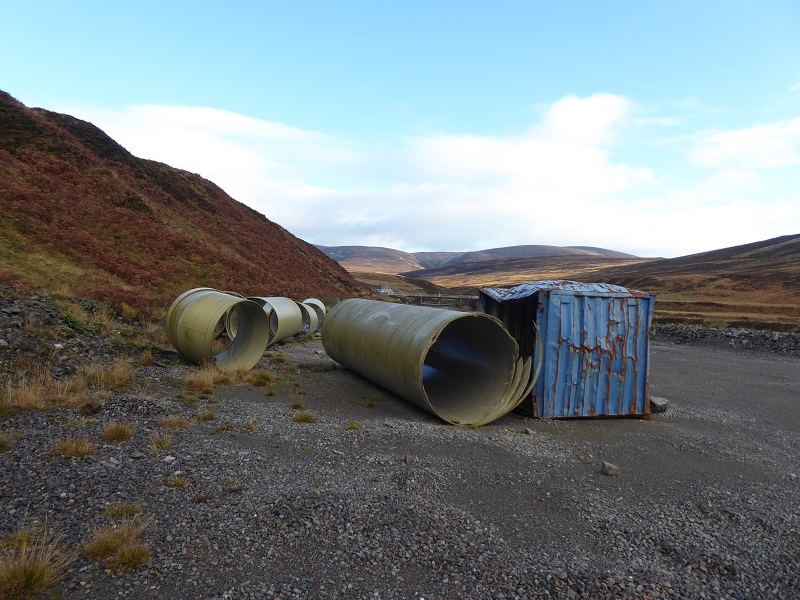
After my visit a few weeks ago to Glen Bruar and my post on the restoration work on the pipeline (see here), the Cairngorms National Park Authority indicated they had some further documentation about the restoration works and would place these on the planning portal. They did so a couple of weeks ago (see here). I found the documentation generally helpful and informative and welcome the CNPA’s willingness to be transparent about the actions it has taken to ensure developers adhere to planning conditions. The documentation also shows that the CNPA has been concerned about what went wrong and been taking appropriate action to remedy this. This post will illustrate that, but also – as promised in my previous post – provide evidence that there is still some way to go before the Bruar Hydro reaches the standard we should expect in a National Park.
Information on how the pipeline was restored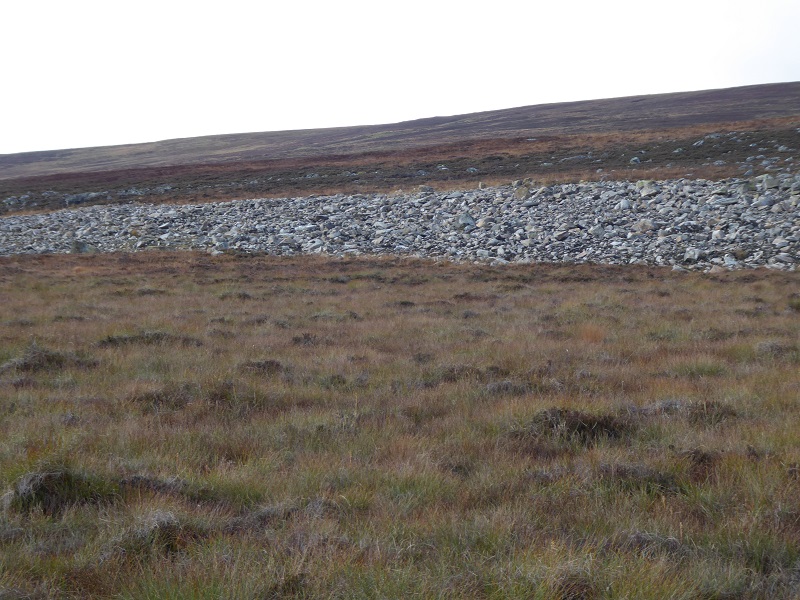
A section of the boulder scar which ran between the powerhouse and the intake which has not been restored.Somewhat paradoxically, what I regard as the most impressive aspect of the restoration work – the initial boulder scar was a landscape disaster (see here) – the “repair” of the land above the pipeline is least documented. While detailed plans were improved in July to the minor intake, the two pipe bridges and the power house embankment, there is no proper specification for the restoration of the pipeline. The documentation that has recently been added (see here), says little more than the reinstatement note from February 2016 which acknowledged the pipeline scar was an issue which would be fixed by removing some of the boulders and robbing turves from neighbouring areas.
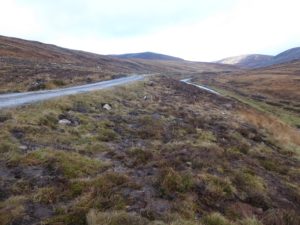
The point here is that such work can be done well or badly and there appears to be no specification for the work. I was interested to find out that the restoration work in this case had been done by McGowan, the same contractor who worked for Natural Retreats on the Shieling Rope tow at Cairngorm about which I had major concerns (see here). In this case they have done an excellent job – well done them! I believe the explanation for this is that the excavations of the robbed turves are shallow and well spaced, allowing vegetation from the robbed areas to recover quickly. The CNPA has told me long armed diggers were used by McGowan to avoid further damage to vegetation. Great! The work though appears to have been all done on trust and the question is what further recourse would the CNPA have if this work had not been done to such a high standard? Indeed what recourse do they have to the developer for the further areas which still need attention?
While the primary focus of the CNPA should be on preventing the need for such restoration work to take place (and that means monitoring how developers remove turves when they dig pipelines or create new tracks so there is sufficient vegetation to re-cover the affected areas), there will be cases where this goes wrong. Setting clear standards for how restoration work should be undertaken in such circumstances, based on what McGowan has done in Glen Bruar, would I think be in the public interest. All contractors would then know what was expected of them in such circumstances.
The quality of the hill track restoration
Apart from the final short section to the intake dam, there was already a track all the way up Glen Bruar but this was “upgraded” for construction vehicles. This work included widening, adding further material to the surface of the track and creation of turning/laydown areas. The intention had been that the track should be restored to how it appeared previously and this had now been done. Its clear from the documentation that the CNPA has devoted considerable attention to the worst sections of track and this has had a positive impact.
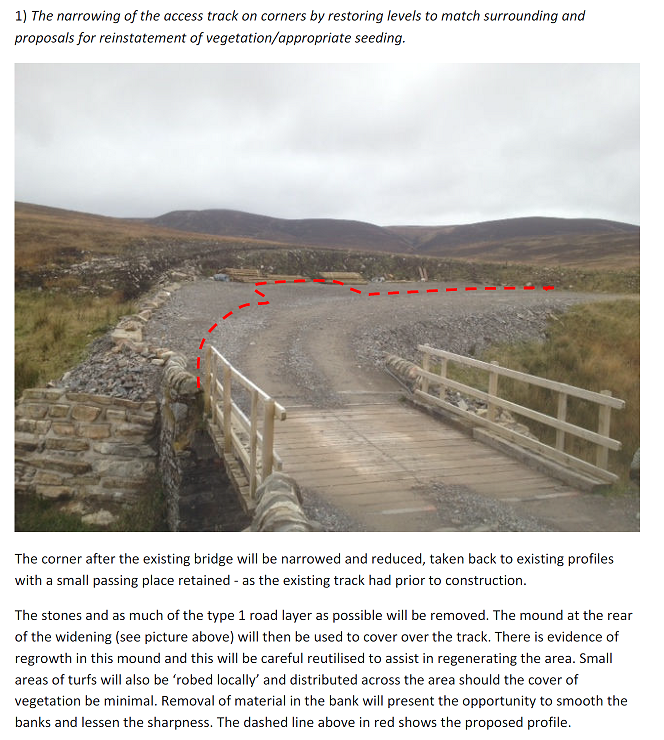
This is how the restored area looks now:
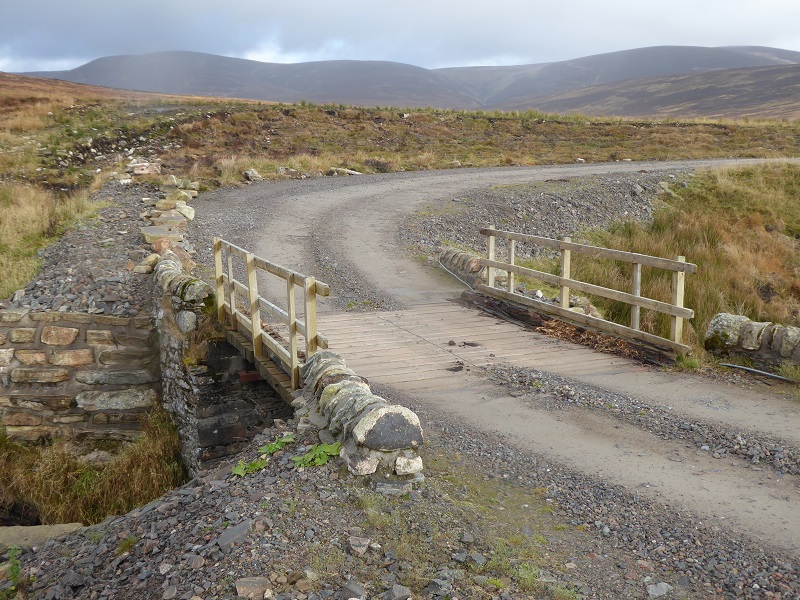 A significant improvement (although the right edge of the road has not been revegetated and is at high risk of erosion). Other parts of the road along the glen appear to have also been narrowed with the result it is no longer a race track.
A significant improvement (although the right edge of the road has not been revegetated and is at high risk of erosion). Other parts of the road along the glen appear to have also been narrowed with the result it is no longer a race track.
The finishing of the track however still in places leaves much to be desired:
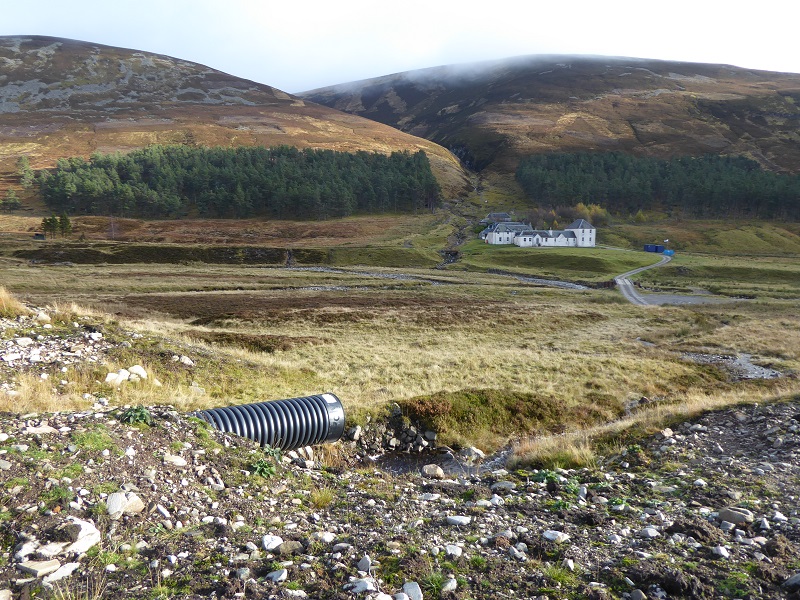
There are a significant number of what appear to be new protruding plastic culverts along the track and there appears to rhyme or reason to what has been fully finished, partially finished and what just left:
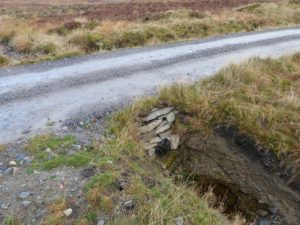
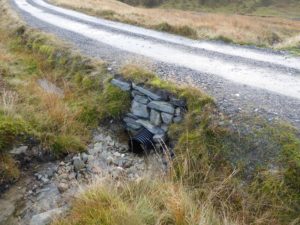
One culvert is mentioned in the CNPA REINSTATEMENT_UPDATE_NOTE (the easiest document to read on the restoration works):

Why not any of the others?,
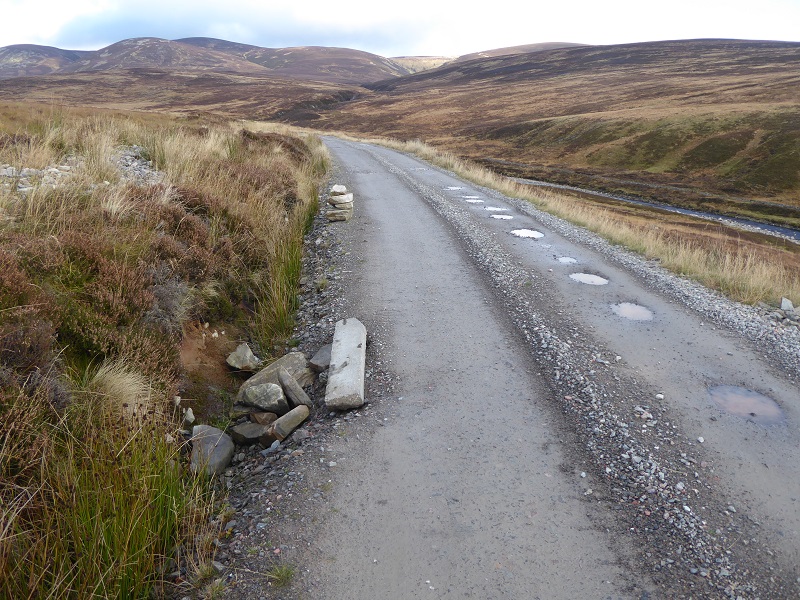
In several places the edge of the road is eroding. It is hard to tell if the stone has been placed there for work yet unfinished or to mark the holes.
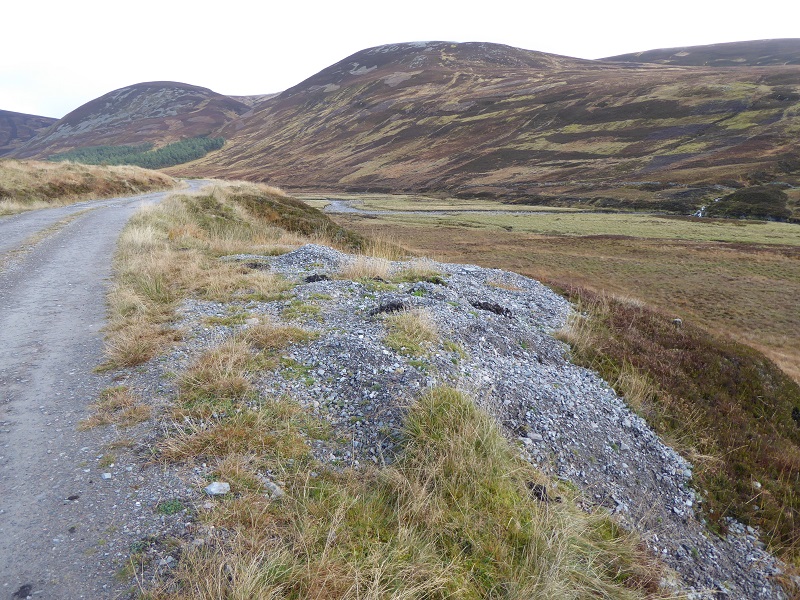 In other places dumped aggregate has not been removed and is spilling down the slopes beside the track.
In other places dumped aggregate has not been removed and is spilling down the slopes beside the track.
The CNPA rightly asked for the pipe and storage areas to be restored:
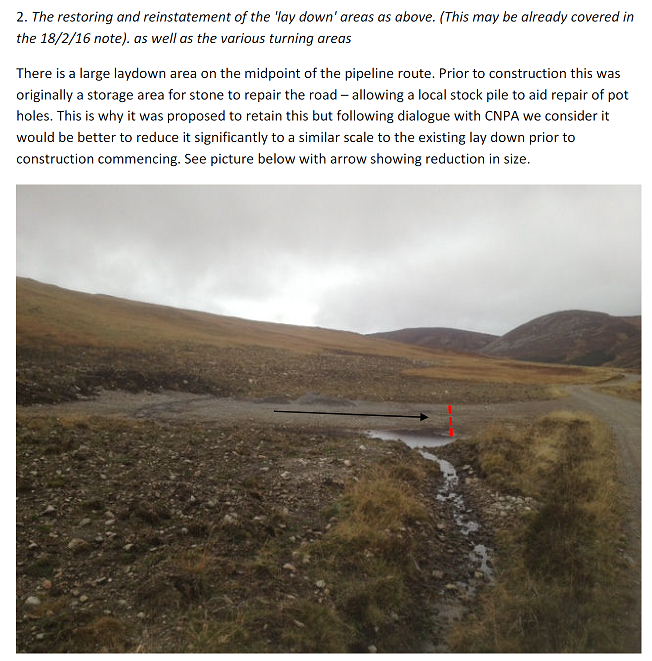 The end result for the largest area (featured above) leaves a lot to be desired, with no evidence so far of the robbing turves technique to restore bare ground as used so successfully on the pipeline:
The end result for the largest area (featured above) leaves a lot to be desired, with no evidence so far of the robbing turves technique to restore bare ground as used so successfully on the pipeline:
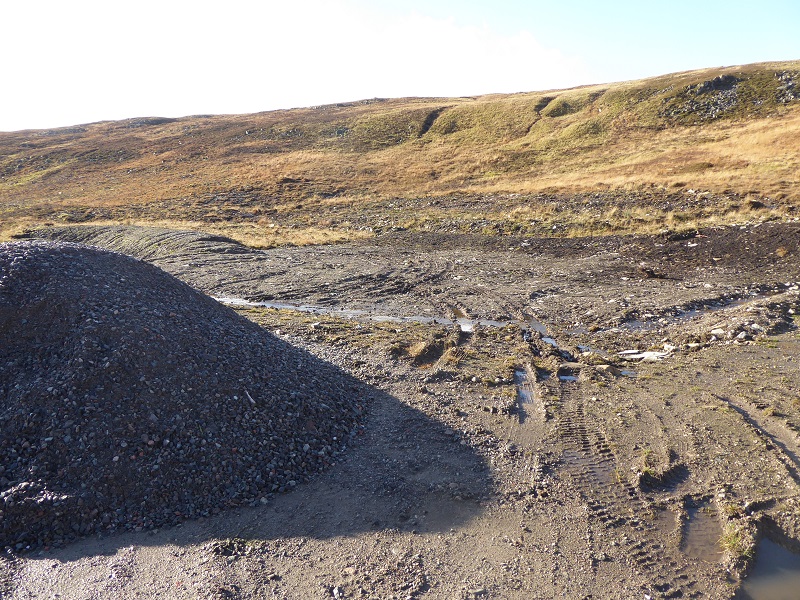
Perhaps this work has still to be done?
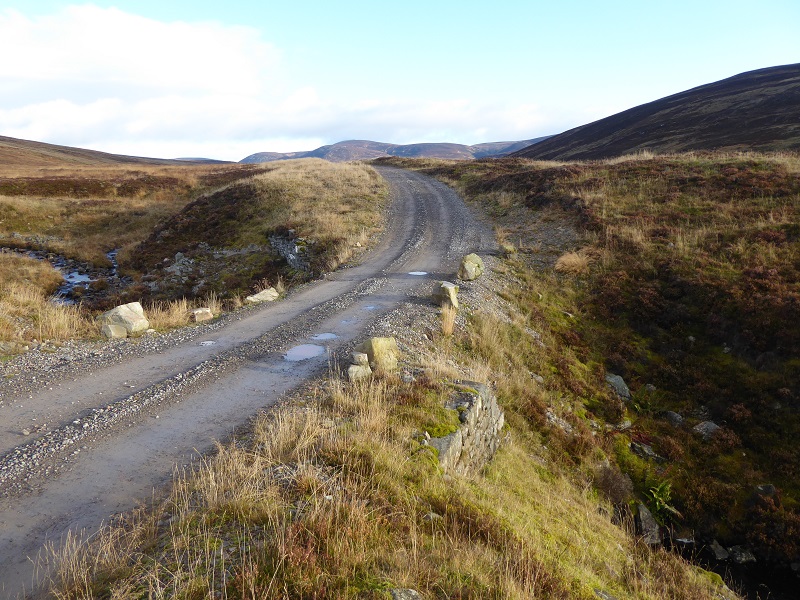
In my view, there is still a significant amount of finishing work still required on the road.
External sections of pipeline
The restoration of these areas have been dealt with as Non Material Variations to the original planning application – an indication that the original plan were not perhaps as comprehensive as they should have been.
The first pipe bridge close to the power house had last year looked a total mess with the river threatening to wash the plinth away. It is now much better:

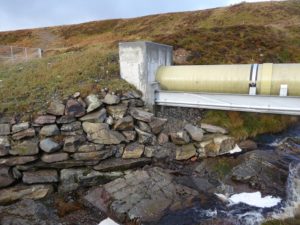
The restoration of the second exposed section of pipe plinth where it crosses a burn has been less successful.
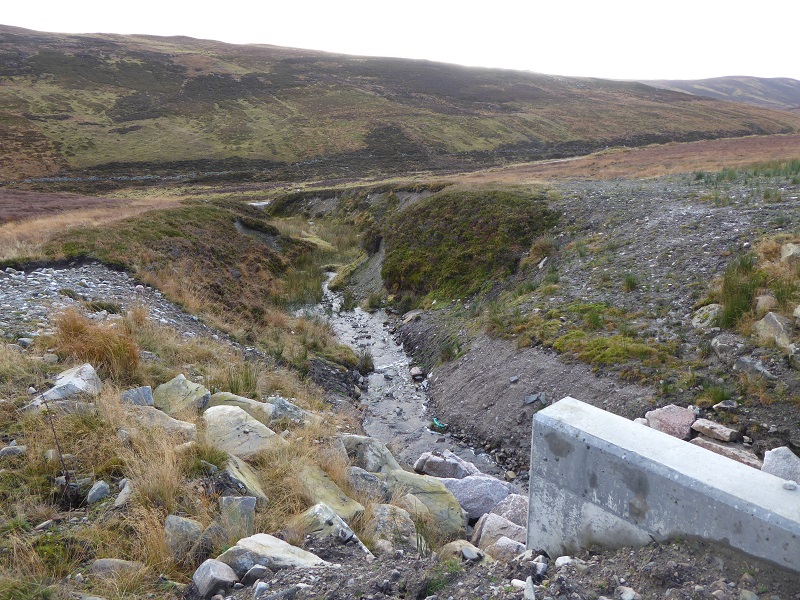
The rip rap bouldering to protect the banks around the plinth looks a mess, there is a large patch of bare ground and the banks of the burn have not been restored with vegetation and one would have thought at risk of rapid erosion.
Other restoration work
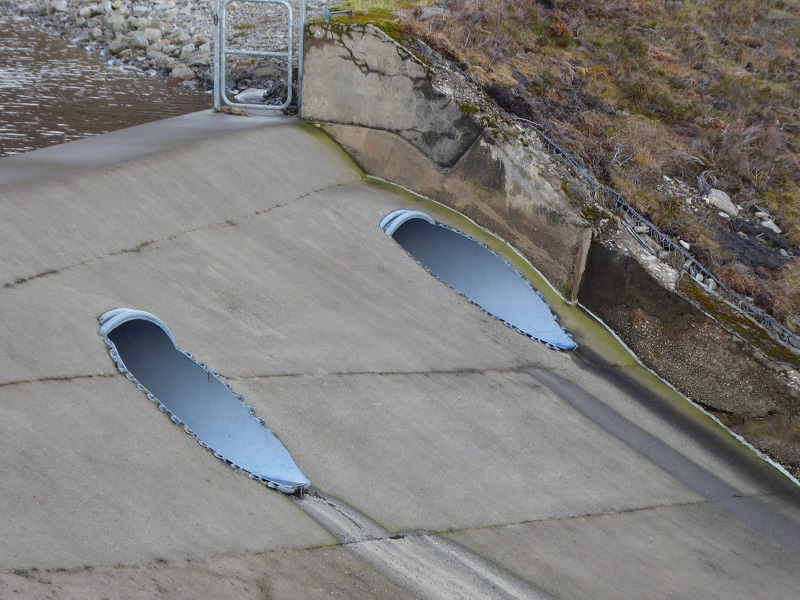
The CNPA has required a lot of further restoration around the top intake which you can read about in the restoration note update (see here).
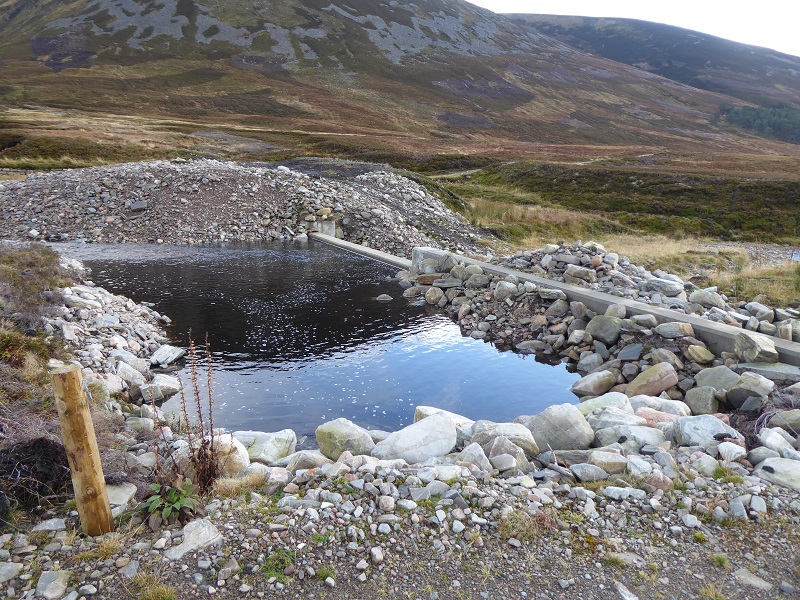
While there has been significant improvements in revegetating ground around the top intakes, I am not sure that the work to improve the secondary intake has been successfully. The river bed here was bouldery but the piles of boulders created to make the dam and cover up the concrete still look as though they have been bulldozed into place rather than deposited naturally.
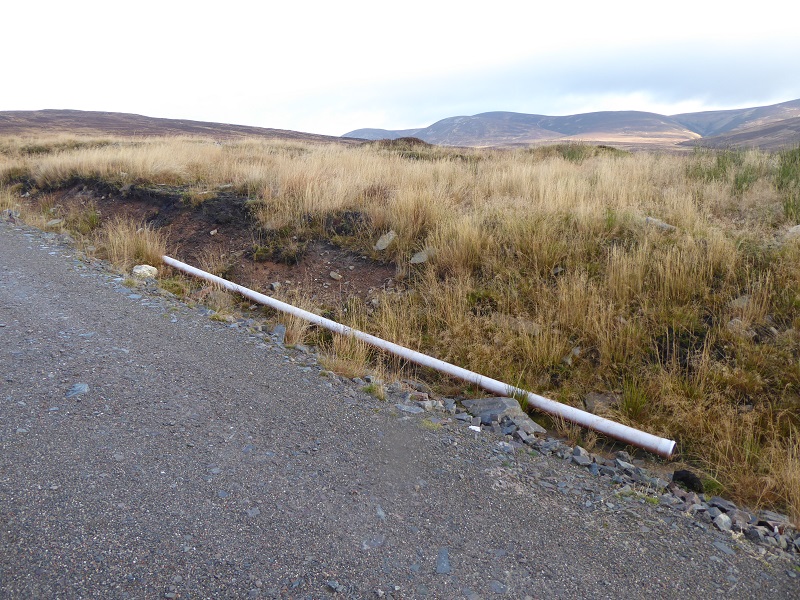
There are also other major (first photo) and minor bits (photo above) of clear up required.
What can be learned from this?
I suspect that CNPA staff have learned a great deal from what went wrong at Glen Bruar and all credit to them for the work they have done to try and reduce the impacts since the Hydro Scheme started to operate. Almost all the issues they have had to tackle – and still need to tackle – stem from the work not being properly specified and supervised in the first place. Its much harder to address problems after the event rather than preventing them from arising in the first place.
The lessons from Glen Bruar therefore seem to be to be about the importance of getting high quality specifications agreed for works before they start and then monitoring these sufficiently to ensure they are adhered to. Its almost certain our National Parks need more resources to do this. The forthcoming planning bill should in my view include provisions for developers to pay for the costs of ensuring this happens.

You should run masterclasses in constructive criticism of this kind of scheme. It would be most helpful when those of us who want to object and make a difference find ourselves overwhelmed by emotion and get shot down in flames for our considerable trouble.